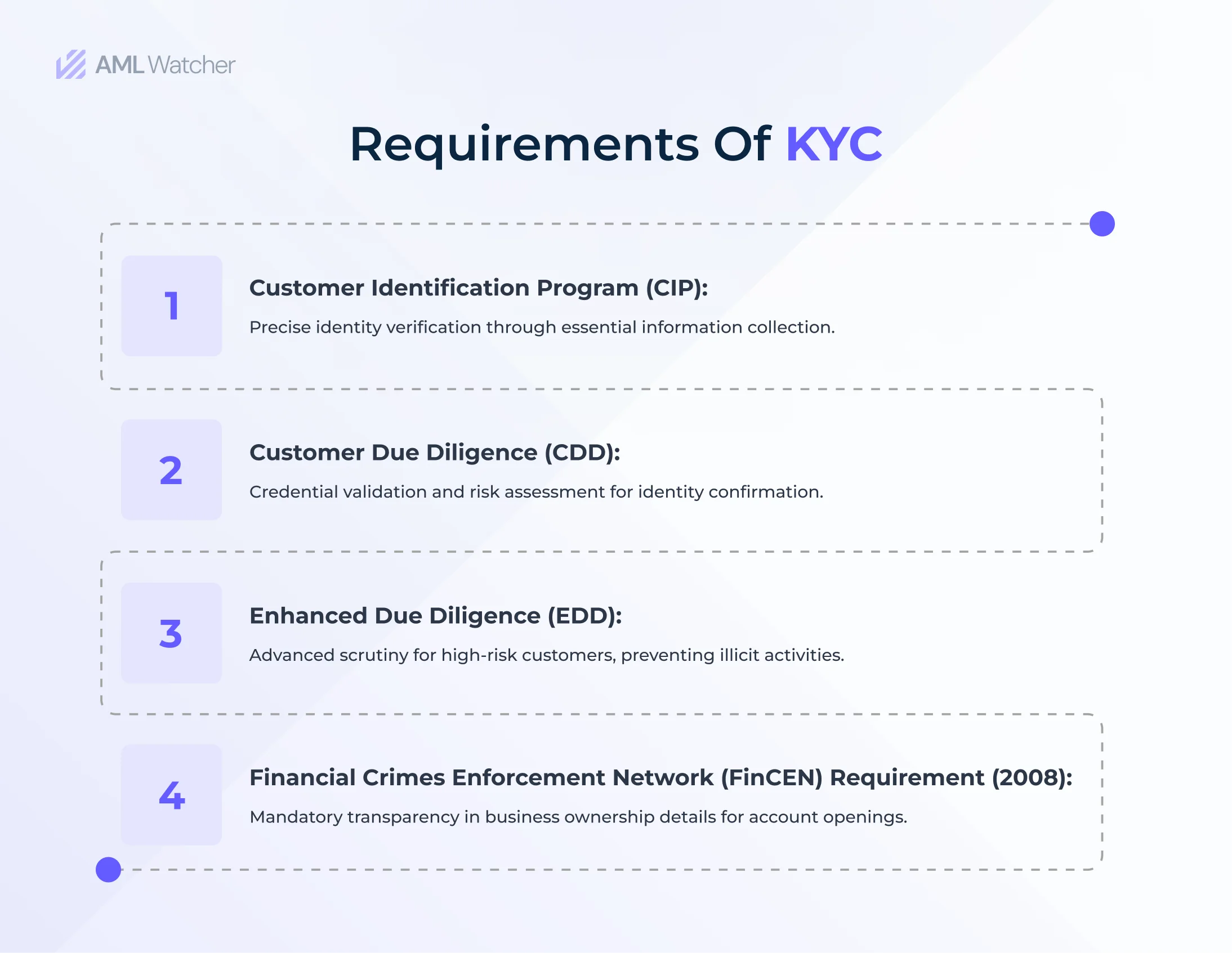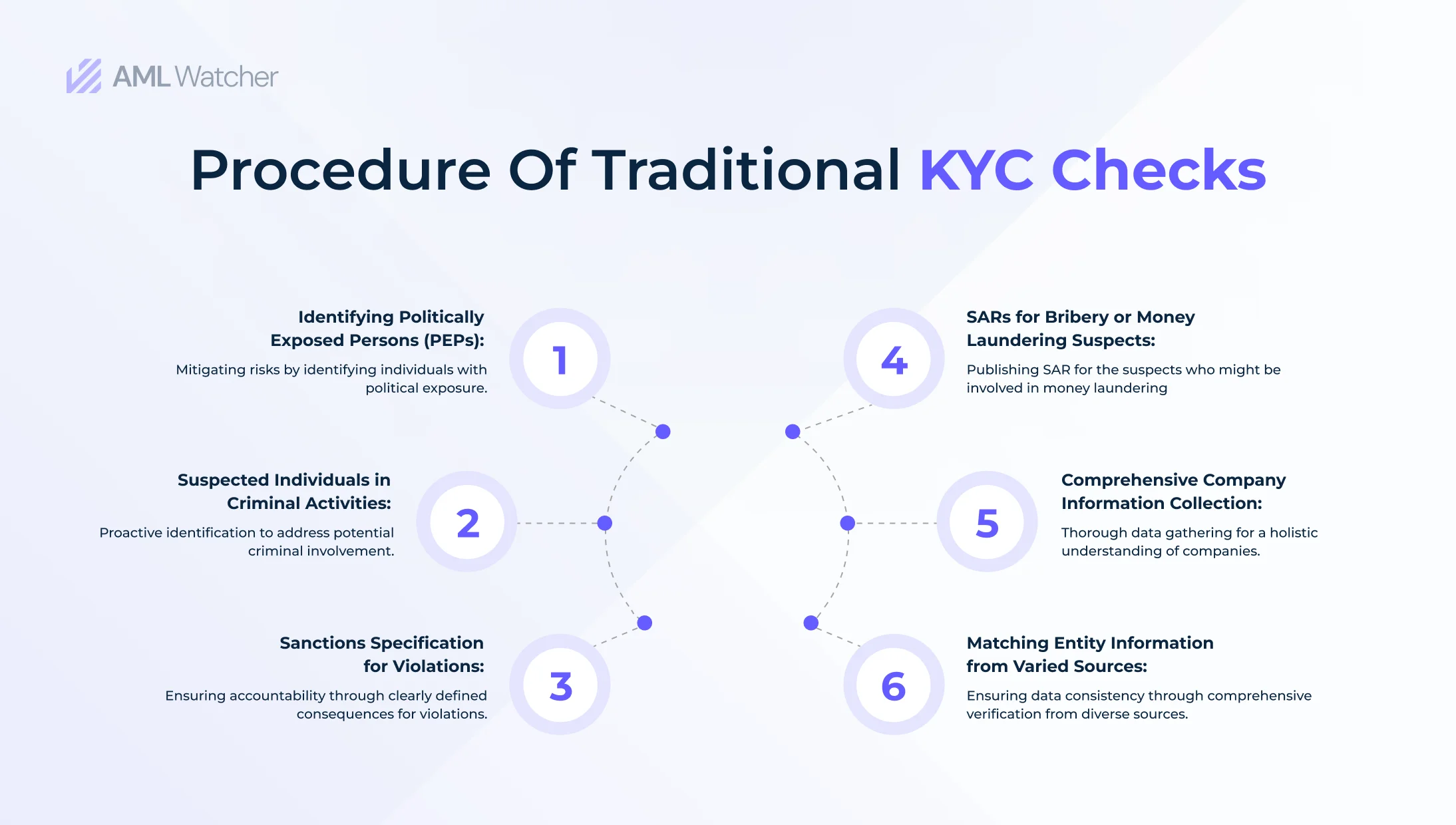
A KYC Method You Need to Know About
KYC is a set of rules followed by banks and investment companies to know their customers and assess the possible risks associated with them. Companies investigate the customer and then plan the strategy accordingly to move on. For better understanding, KYC requires the customer’s name, ID card, address, job status, and other details. KYC is a way to understand how much risk companies afford to invest their money. PEP screening is part of KYC to verify their customers against available PEP lists. The PEP screening method provides the basic roadmap to carry out KYC procedures efficiently.
What are KYC and eKYC?
KYC stands for “Know Your Client” or “Know Your Customer.” Financial sectors combat financial crime and money laundering by implementing KYC. Customer identification improves performance in the later stages of the process. Globally, financial institutions face money laundering challenges and countering the financing of terrorism (CFT). The PEP compliance program incorporates national and international laws to actively implement KYC in customer identification.
eKYC
eKYC, or “electronic Know Your Customer,” electronically verifies the customer’s identity. Electronic methods streamline the identification process by utilizing online forms and digital documents to authenticate a person’s identity. 99% of the adult population in India moved to eKYC and created their digital identity. Aadhaar is the scheme in India to generate eIDs. eKYC eases customer onboarding from any device, and the incorporation of AI now generates more accurate results in verifying customers electronically.
Why is KYC converted to eKYC?
Keeping records of customers and businesses costs a lot to financial companies. Record keeping is one of many issues; physically updating the record was a headache. Banks continuously ask customers to update their manual records about status changes or other details. This was a real problem for financial companies and customers. Some companies directly manage multiple banks and ultimately get a lot of requests to manage, which could be improved. To solve this problem, PEP screening software and a centralized eKYC system were developed to keep all the information in one place, easily updated, and save time. Banks can check information anytime from anywhere. TBanks and other financial companies shifted significantly to digital channels due to COVID-19, pushing customers and banks to adapt. Approximately 64% of bank accounts opened in 2020, while 36% had physical branches.
What are the requirements of KYC?
A three-step verification is done by financial companies in KYC.
- Customer Identification Program or CIP collects customer information.
- Name
- Address
- Date of birth
- Identification number.
- Customer Due Diligence (CDD) for customers’ credentials to confirm their identity and risk assessment for suspicious activity.
- Enhanced Due Diligence (EDD) for high-risk customer verification against infiltration, terrorism financing, or money laundering for thorough scrutiny and risk assessment.
- Financial Crimes Enforcement Network (FinCEN), in 2008, added a new requirement to gather details about individuals linked with legal entities who own, control, and benefit from companies when opening accounts.
Why is KYC important?
KYC and PEP list screening procedures are necessary for banks to check customers’ authenticity to evaluate and monitor potential risks associated with them. KYC prevents and identifies activities like money laundering, terrorism financing, and other illegal schemes. Banks kept themselves safe by verifying ID cards, checking faces, examining documents, and using biometric methods. Banks must follow KYC regulations and anti-money laundering rules or face hefty penalties. From 2008 to 2018, many European and Asian countries were sanctioned around 26 billion Dollars for non-compliance with AML and KYC.
What are Traditional KYC checks?
Financial institutes carry out simple checks and fundamental business details.
- Identify the persons likely to be included in (PEPs) Politically Exposed Persons.
- Identify those PEPs having more chances to be involved in criminal activities.
- Aware the companies and individuals about the sanctions over violations.
- Take strict actions against suspected individuals of being involved in bribery or money laundering
- Businesses are required to submit details about their addresses, national insurance policies, directors, social security numbers, and company numbers.
- Match the information from PEP screening with public information of entities with varied sources, including their names, addresses, and registration numbers.
Document for KYC and eKYC verification
Document verification in KYC is processed both digitally and manually. A digital document verification process confirms whether the ID or document is genuine after screening and informs financial institutions about the authenticity of a copy.
Manual KYC Document Screening
PEPs on an Ongoing AML must comply with rules by submitting KYC documents. These requirements apply to both companies and legal entities with additional income proofs.
- Identity verification
- Passport
- Driving licence
- Birth certificate
- National identity card
- Photograph of the applicant
- Address verification
- Utility bills
- Tax bills
- Driving license
- Bank statement
- Mortgage statement
- Rental agreement
- Income verification
- Bank statement
- Pay slips
- Income tax returns
For companies, KYC documents vary according to the legal structure. Besides individual ID, corporate KYC documents include
- List of trustees
- Recent audited accounts
- Incorporation certificate copy.
- Relevant professional details
- All documents establishing, managing, or regulating the structure
eKYC Document screening
For online customer onboarding, customers only have to prove their identity. Customers upload their image, verified against an image extracted from an ID card. The rest of the data automatically appeared on the screen if the photographs matched; otherwise, upload the proper photograph again.
What is the Process of KYC Compliance?
Customer identity and associated risks are identified through a process called KYC. KYC compliance process includes
Customer Identification
Individuals submit personal information such as name, date of birth, address, and identification numbers (e.g., passport, national ID).
However, Businesses submit structure, directors, and other related data details.
Document Verification
Customers should provide official government-verified documents such as their identity, IDs, utility bills, etc.
Businesses submit certificates showing details of incorporation, ownership and other legal requirements..
Risk Assessment
Financial institutions then conduct customer risk assessments and investigate their financial activities, sources of income, and the nature of their transactions.
Higher risks, including PEPs or businesses verified by Enhanced Due Diligence (EDD).
Ongoing Monitoring
Monitoring unusual activities helps in updating customer profiles.
Record Keeping
The foremost duty of financial institutions is to maintain detailed records and provide information to higher authorities regarding the customer collected during KYC.
Compliance with Regulations
Financial institutions are bound to adhere to the regulations related to KYC, AML (Anti-Money Laundering), and counter-terrorism financing. Meeting these regulations requires proper training and audit practice.
Reporting Suspicious Activity
Any Suspicious activity should be reported to higher authorities noted during KYC for necessary actions.
Technology incorporation
Incorporate advanced technologies, such as biometric verification, electronic databases, and digital credentials, to streamline the KYC process.
Penalties for Non-Compliance
Impose penalties for non-compliance of regulations in the form of fines or legal consequences for financial institutions.
A risk-based approach to KYC
All financial institutions follow a risk-based approach to assess the information collected through KYC information against PEP lists. This approach gives a transparent reflection of the business entity’s engagement activities. If the entity passes the prerequisite checks, the institution assigns a risk rating based on passing KYC evaluations. After passing KYC, entities undergo thorough examinations carried out to Enhanced Due Diligence (EDD)
- Companies in sanctioned territories or countries are identified for high corruption, money laundering, or terrorism financing.
- Directors or executives in such companies are politically exposed persons (PEPs).
- Documented owners will be the company’s primary beneficiaries.
- Non-country residents operate a company as customer’s clients.
- Lack of anti-money laundering (AML) and anti-terrorism systems.
- Customer’s businesses rely on cash transactions.
What are the Expected Innovations in KYC?
In November 2018, various US agencies encouraged certain banks to increase their identification abilities. They advised incorporating Artificial intelligence (AI) and other digital identity technologies into their systems. Before that, European Supervisory Authorities mentioned PEP screening solutions to tackle challenges in compliance. They suggested an automated application to identify and verify a person even though they seem blurry and pixelated.
Final verdict
KYC (Know Your Customer) benefits both financial institutions and customers. However, the noticed shift onwards digital channels reshaped the way KYC proceeds. PEP screening, being a component of KYC, scrutinizes political ties. The PEP screening method provides essential information from customer identification to risk assessment. eKYC (electronic Know Your Customer) leverages technologies like biometrics for easy access to onboarding, which is the most popular in India. A well-developed risk-based approach collects information against relevant lists, assigns risk ratings, and implements enhanced due diligence (EDD) to higher-risk entities. KYC is not just a regulatory requirement but a tool against financial crimes, and KYC will witness further innovations to meet the needs of the industry and its customers.
We are here to consult you
Switch to AML Watcher today and reduce your current AML cost by 50% - no questions asked.
- Find right product and pricing for your business
- Get your current solution provider audit & minimise your changeover risk
- Gain expert insights with quick response time to your queries




